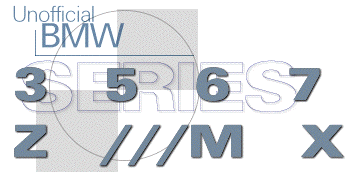|
Ron Stygar Carl Buckland Dale Beuning Forums Help
From digest.v7.n214 Wed Sep 3 16:48:02 1997 Was going to tackle this myself, but then I thought I'd defer to the experts. A good friend of mine designs and builds custom racing shocks for a living (also has been known to revalve Bilsteins...), among other things. He's also a Ph.D. mechanical engineer from MIT, hangs out with some CART & SCCA FA guys and major US auto manufacturer's suspension development groups. He's forgotten more about shocks than I'll ever know. I asked him if he'd mind writing up a layman's explanation of the difference between monotubes and twin tubes. Anyway, here's his response to some of your questions. He's not a subscriber to the digest, but f eel free to contact him with further questions. Enjoy.
WHAT ARE MONOTUBE SHOCKS? The real secret of monotube shocks is in the piston. Obviously, for the piston to move up and down inside a snugly fit cylinder, the oil has to flow through the piston. To control the force produced by a monotube, you have to control the flow of oil through the piston. The piston has two sets of relatively large holes that go straight through. Each of these sets of holes are covered on one end only by a number of valve shims which regulate the flow in one direction and completely block the flow in the other. The end of the holes that is not covered by the shims has "pockets" machined in the piston around them to allow oil to flow past the shim stack on the opposite side of the piston and into the holes freely. So we have two sets of valve shims, one to regulate flow in compression and one to regulate flow in extension. And when the shock is in compression, the extension shims block their holes, when the shock is in extension, the compression shims block their holes. Monotube shocks are "tuned" by selection of valve shims, and different shim packs can be specified for extension and compression (or rebound and jounce, if you prefer). If a large number of relatively thick shims are used, the shim pack would be considered "stiff" and would provide a lot of force at a given shaft speed. In the same way, a single very thin shim would give a very soft shock. The art and science of coaxing desired performance out of monotubes is in the design of the shim packs and literally millions of combinations are possible. For example, a complete stock of shims for re-valving Bilstein shocks and struts ranges from 0.15 to 0.5 mm in thickness, and 20 to 38 mm in diameter. This range of shims in their various combinations would suit any application from a street Neon to a full-race Coupe deVille!
HOW ABOUT TWIN TUBES? The valving or flow regulation hardware is placed at two separate locations: at the bottom of the inner tube and within the piston. Perhaps the most common design of modern twin tubes places the compression valving in the piston and the extension valving in the bottom of the inner tube. The valving in twin-tubes is of the spring-plunger type, and tuning is accomplished by changing springs. Given the extremely wide range of springs available, a similarly wide range of damping characteristics is also available.
WHICH IS BETTER: TWIN-TUBE OR MONOTUBE SHOCKS?
>From a performance perspective, MONOTUBES ARE BETTER! Here's why:
The highest performance shock absorbers in the world including Penske, Ohlins, Koni racing shocks and Bilstein (with a few exceptions) are all pressurized monotubes. All teams in F1, CART, IRL, etc., etc. use high pressure monotubes exclusively. This by itself speaks volumes. If there is a downside to monotube shocks, it would have to be a SLIGHT cost disadvantage. Bilstein monotubes list in the range of about $139 to $259 (M3 front strut). Compare to Koni, Carrera, and the others. There is probably a price difference, but not as much as you may think.
Michael G. O'Callaghan
814-774-8808 VOICE
At 02:04 AM 9/3/97 -0400, you wrote: |

